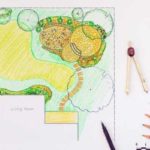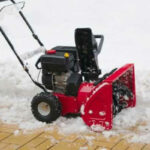Hardscaping, landscaping, and softscaping are all ways of describing the features you add to your yard. But there are differences in each.
Hardscape is the hard, built structures within a landscape that contrasts with vegetation. Softscape makes up a landscape design’s horticultural, animate, and pliable parts. Both hardscape and softscape combined make up a landscape design.
Need more details on this? Of course, you do. So keep reading.
What is Landscape?
Landscaping is the part of your outdoor space that involves planting trees and shrubs. It can refer to the aesthetic design of an area in addition to built features. This includes plants and trees as well as what they are placed in and around. Landscaping can consist of more than just plants; it can also include water features, stone walls, paths, and structures. But we break landscaping down into two other terms – hardscape and softscape.
What is Hardscape?
Hardscaping is the term for the rigid, permanent structures you put in your outdoor space. It includes patios, decks, walkways, gazebos, and other architectural features built to last. You could use it to describe things like any construction that involves building or installing hard surfaces, such as stone or brick walkways, patios, and retaining walls.
Hardscape benefits the landscape by providing barriers against erosion. Hardscape should also beautify the area. You will find that more hardscapes will be used in drought-prone regions. That way, there isn’t a need to use a lot of water on the softscape.
If you aren’t sure if something in your landscape is hardscape, maybe ask some questions: Is this a permanent structure? Is this a living object? Is this object hard, solid, and unchanging?
What is Softscape?
All those things mentioned above that haven’t got much to do with the plants and layout of your yard can be considered softscaping. Softscaping is the part of your outdoor space that involves bringing in softer elements like plants, furniture, water features, mulch, gravel, as well as lighting. What sets it apart is that softscape features usually don’t involve permanent construction. Instead, they are added to an existing landscape using materials like mulch or gravel.
Softscape benefits the landscaping by beautifying the area. If you aren’t sure if something in your landscape is softscape, maybe ask some questions: Is the item a living thing? Does this change and adapt to the environment? Is this soft to the touch?
In Conclusion
This was the smallest article that I’ve ever written. But, it was a question worth answering. If you want to make sure you get the most out of both your hardscape and softscape, you may want to hire a landscape designer and let them worry about it.
You want to use both hardscape and softscape in your yard to keep a balanced design. Now, you know what people are talking about when they refer to either.












